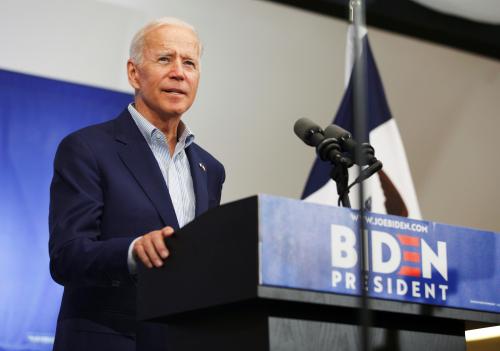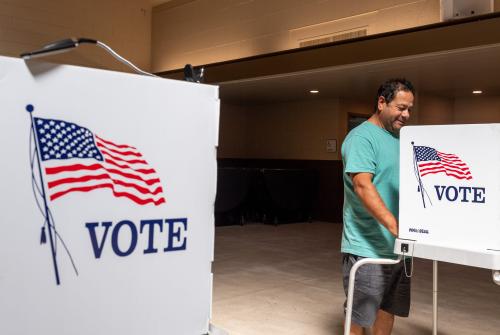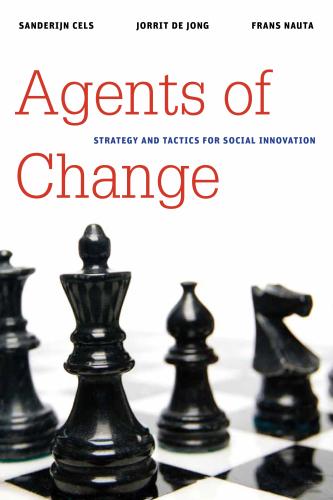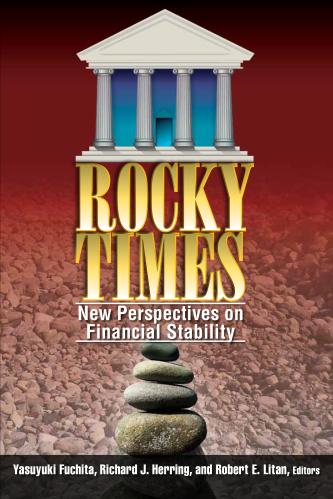This weekend the Democratic National Committee will descend on Atlanta to elect a new party chairperson. The frontrunners—Minnesota Congressman Keith Ellison and Former Labor Secretary Tom Perez—lead a slate of eight vying for the leadership role. For a party that has lost the White House and is in the minority in both houses of Congress, the choice of its next leader is the first step in an effort to reclaim power.
An overcorrection from the lessons of 2016 will be just as dangerous to the party as no correction at all.
The party has a very long to-do list. It has to heal divisions from the most recent Democratic presidential primary, devise a strategy to win back voters and voting groups who backed Obama in 2008 and 2012 but failed to show up for Clinton in 2016, recruit high-quality candidates for the 2018 House elections, protect 2018’s many vulnerable Senate incumbents, execute a comprehensive fundraising plan, work closely with state parties to understand and be responsive to their needs, and serve as a constant check on President Trump’s power. Each of these is a challenge and for the eight men and women vying to become chair, the complete package will be a tall order.
One of the central themes that all of the DNC chair candidates agree on is a 50-state strategy. This strategy was made most famous by former party chairman Howard Dean (2005-2009), which (although controversial at the time) successfully lead to enormous gains in Congress, statehouses, governorships, and ultimately the White House. However, many of this year’s candidates are using the 50-state strategy as a talking point but failing to discuss the details about how they will implement it.
Connected to the 50-state strategy is another challenge the next chair will face: a factious party. The Democratic Party is composed of moderate Midwesterners, diehard progressives, and everything in between. It is a big tent party in which no brand of ideological discipline will unite its voters on every issue. That is true nationally and it is also true across states. There is surely merit in crafting a party message that is more progressive and that focuses on wages, health care, education, reigning in Wall Street, and jump-starting manufacturing. However, the national message of the party need not be adopted by every Democrat in every race in America.
Applying progressive litmus tests and threatening to primary red-state, moderate Senate Democrats in 2018 if they dare do anything but genuflect at the altar of progressivism is not a 50-state strategy. And to be fair, many progressives understand this. Yet, groups exist who would seek to weaken Claire McCaskill, Heidi Heitkamp, or Joe Manchin. An effective party chair would step in and do what is necessary for the health of the party. When asked about such a situation in Wednesday night’s DNC chair debate on CNN, the candidates largely demurred or squirmed, not willing to step on anyone’s toes. The problem? The role of an effective party chair is to step on toes—or stomp on toes—when the health and success of the party is on the line.
Maxine Waters is an effective representative of Los Angeles; Nancy Pelosi well reflects the views of her Bay Area constituency; Earl Blumenauer stands up boldly for the liberal views of his fellow Portlanders. But anyone who thinks those three people would have a shot at being elected Senator from North Dakota is delusional. Howard Dean’s success—and much of the reason Democrats took back the House and Senate in 2006 and ultimately expanded their majorities to significant size in 2008—was a willingness to run high-quality people who looked and sounded and thought differently than the median member of the party.
The new chairperson must think in terms of broad-based, party-building, litmus test-free politics. He or she must use empirical data to understand what went wrong in 2016 and how to correct it, not simply listen to the loudest voices in the room. An overcorrection from the lessons of 2016 will be just as dangerous to the party as no correction at all. But the new chair has to think about more than simply 2016. The new chair must do the exact opposite of what Barack Obama did for eight years. Obama came to office in January 2009 with a wave of Democratic success nationwide and did little to hold onto that success, keep state parties healthy, or keep Democrats in office. During his presidency, Democrats lost 12 Senate seats, 69 House seats, 13 governorships, 21 state legislative chambers and about 1,000 state legislative seats.
A 50-state strategy does more than elect a president and pick up House and Senate seats. It also gets governors elected and takes back state legislative seats—key steps for a party interested in playing a larger role in redistricting after the 2020 census. No, a DNC Chair doesn’t get a person elected from the 5th senatorial district in Utah. What a chair does is empower state parties, raise funds on their behalf and make sure that all of a party’s component parts are working together to get candidates elected.
In an era of celebrity politics, it should matter less if you’re the candidate Bernie Sanders built or the man on Hillary Clinton’s VP shortlist. An effective chair for Democrats—or Republicans for that matter—is someone who can stand in a room full of leaders and egos in the party and tell them “no” when they need to be told “no,” and support them when they are doing the right thing. An effective party chair will speak not in talking points or broad objectives, but in detailed, effective strategy to achieve party-wide goals. An effective chair will lay out annual, realistic benchmarks and tell the party he or she will resign if those benchmarks are not met.
One of the eight men and women on the CNN stage Wednesday night will soon be charged with that task. The sooner that person starts talking like a party insider and strategist and less like the mainstream and social media darling of their sub-constituency, the better off the Democratic Party will be.
The Brookings Institution is committed to quality, independence, and impact.
We are supported by a diverse array of funders. In line with our values and policies, each Brookings publication represents the sole views of its author(s).










Commentary
Steep challenges face the next Democratic National Committee Chair
February 23, 2017